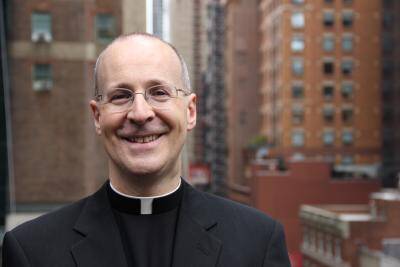For me, the tipping point in my awareness of the crisis facing women religious came by way of Twitter and a phone call.
The tweet alerted me to an alarming news item about the Sisters of St. Joseph of Springfield, Mass. An article headlined “Sisters of St. Joseph Face Dire Financial Situation With Hope, Faith,” reported that a storied group of sisters, who educated generations of Catholic children and young adults and are much beloved in Massachusetts, would be bankrupt within five years. “The bottom line,” said a report from financial consultants, according to MassLive.com, “is that if the congregation continues business as usual, it will be without cash assets within a half-dozen years.”
How did this happen? The plight of the S.S.J.’s, who have served the Springfield Diocese for 130 years, is not attributable to laziness. Has there ever been a harder working group of people than Catholic sisters? Nor can it be chalked up to extravagance. Sister Maxyne D. Schneider, the congregation’s president, described several cost-saving measures taken by the order, like saving on food preparation at the mother house, selling the members’ cars and asking sisters to reduce their already tight budgets. Still, the report predicted “financial ruin.”
On the heels of that news came a phone call from a Catholic sister I’ve known for some time. After a discernment process, her order had decided to sell the house in which she was living. So she and another sister were searching for a new place. But as a religious sister, she has no savings, and her order could not locate affordable rental space anywhere within 100 miles. Even though she does not need medical care, her only option was to move to the only place available, a retirement community in another state.
Most Catholics know that religious orders (for both men and women) are struggling financially. But why? For the women’s orders, the easiest explanation is that even when their congregations were filled with sisters in active ministries earning a salary, those salaries were low. Now, with declining vocations and many sisters retiring from income-producing jobs, even those meager salaries have almost disappeared. Yet when I mention this to some Catholics, they ask, “Why doesn’t the diocese help, or the Vatican sell off some of those statues?” Or, “I heard about some sisters who sold off a lot of land, and they’re rich.”
To answer those questions I turned to Janice Bader, C.PP.S., the executive director of the National Religious Retirement Office at the U.S. Conference of Catholic Bishops.
Why don’t the dioceses help? Every religious community is financially autonomous, said Sister Bader, and the income, earnings and expenses have always been managed separately from the dioceses. Besides, she said, “Each diocese has its own financial responsibilities.” Just think of the closing of parishes and schools. Even if the dioceses were positioned to help, they do not have sufficient funds to provide for the “retirement fund shortfall.”
Why doesn’t the Vatican help? Like the dioceses, the Vatican too has financial responsibilities and helps to support many organizations, especially in the developing world. “While the needs of religious in this country are great,” said Sister Bader, “there are many other portions of the globe that have tremendous needs but fewer opportunities for assistance.”
How about all those orders selling off property? While a few orders have sold off property, Sister Bader noted that buildings are often a liability, expensive to maintain and “extremely difficult to renovate for other uses.” Because of asbestos contamination, it can cost millions to demolish a building, and buyers are far more interested in the land, anyway. Even if a sale is possible, the cost of building a new, smaller facility to house retired and infirm sisters can be “staggering” and would consume most of the earnings from a sale.
Prospects are bleak. Perhaps the best way to help these generous women is to contribute to the religious orders that have made a difference in your life. The Retirement Fund for Religious and Support our Aging Religious are also fine places to start.
The sisters do not despair. They never have. “As leaders, we can’t give others hope unless we have hope ourselves,” Sister Schneider said. “We have always had a sense we are together and we are about God’s work. That is a sense of hopefulness.”








